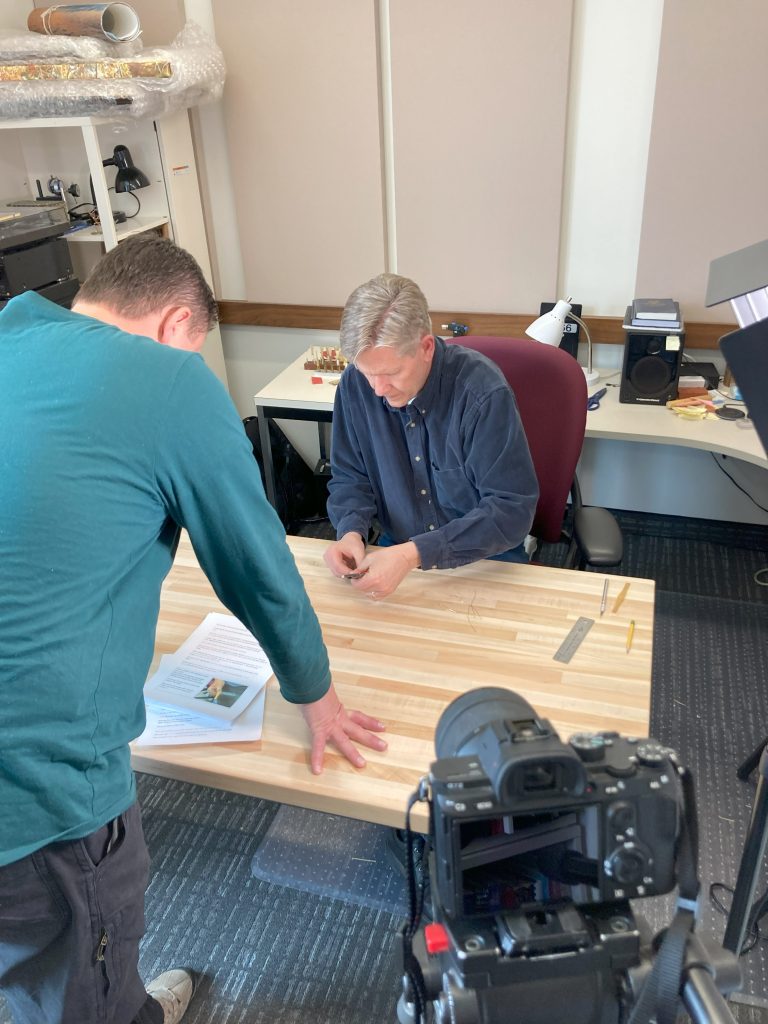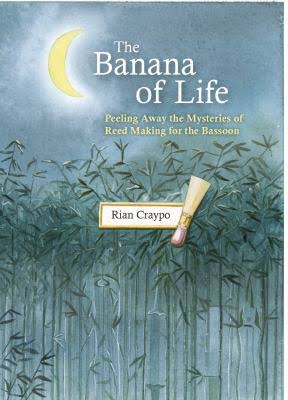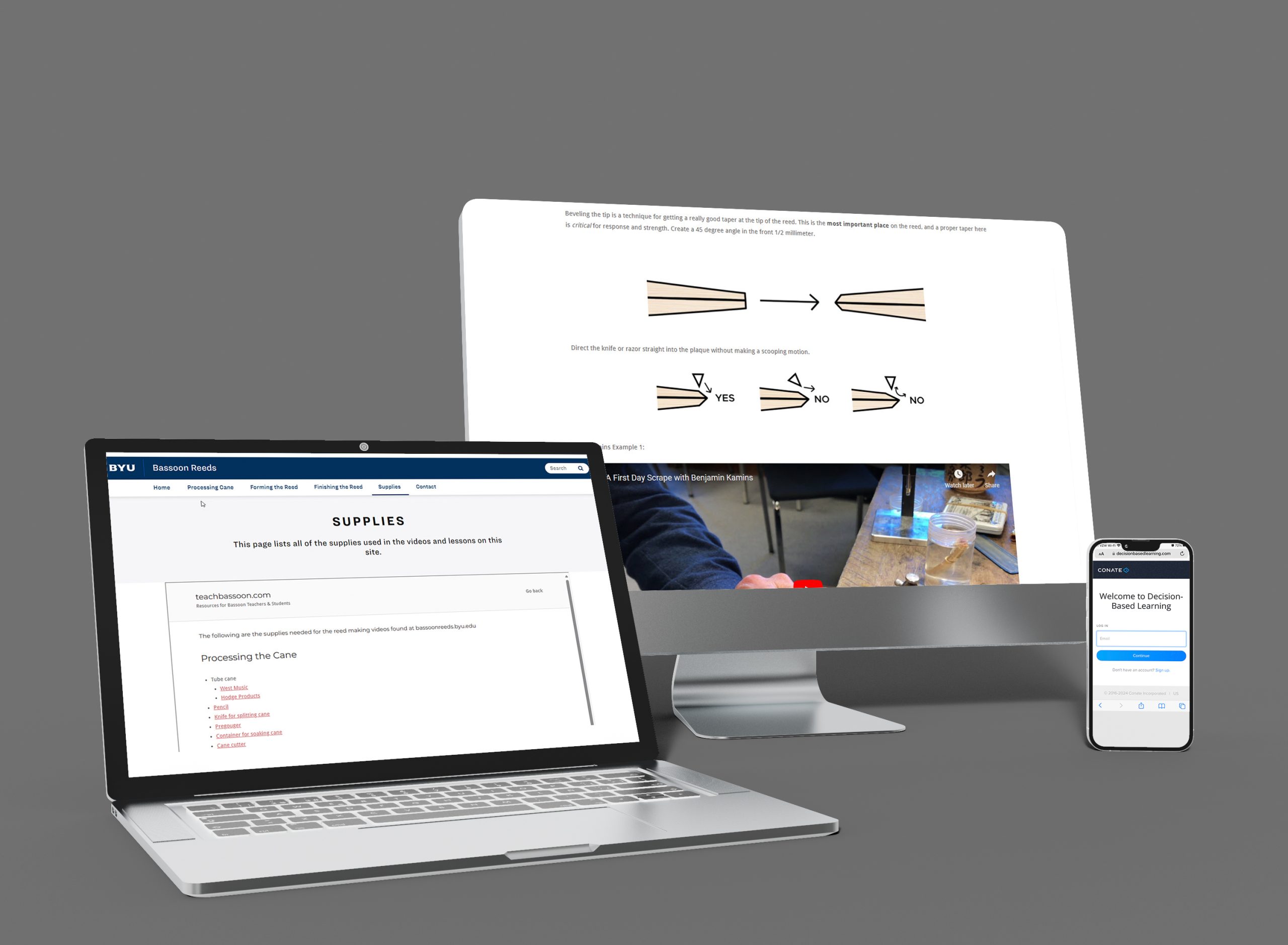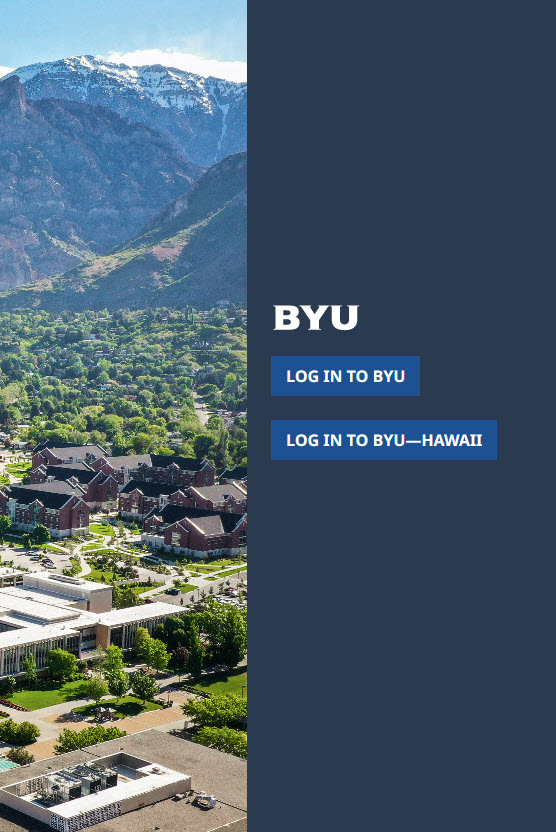Creativity & Collaboration
My Role: Project Manager, Creative Director, Product Designer, & Head Problem Solver
The project encountered some tricky design problems regarding copyright and also technology.
Conundrum 1:
I found a book that detailed reed finishing steps and tests, which was ideal for a Decision-based Learning (DBL) model. I needed the author’s permission to use it and a plan to protect it from unauthorized use.
Conundrum 2:
I chose BYU’s Brightspot platform for the website in order to get a byu.edu domain. I wanted to spare Dr. Smith the responsibility of site updates and wanted to ensure I could update the supplies list and learning modules after my Brightspot access ended.
Conundrum 3:
Brightspot was a more limited web platform than what I’d used before. I also faced difficulties getting answers from BYU’s website team because my questions were unprecedented.
Or keep scrolling to continue.

“Jessi Vandagriff’s contribution to this project cannot be overstated. The collaborative venture has been an enormous undertaking, and never would have made it to this point, let alone gotten off the ground, had it not been for Jessi’s vision, passion, ingenuity, and sustained effort.”
– Dr. Christian Smith
Conundrum 1: Solution

I needed to create a way that future, current, and former BYU students could access the DBL learning modules without making them available to the public.
DBL learning modules are usually created on a Google Slides deck, with one slide per learning module. This was not an option for us, as we did not want the learners to share the slide deck with non-authorized users, therefore infringing on the copyright of the author.
Putting the learning modules behind a login was another solution we considered. It was not viable because it would have prevented the DBL software from accessing them.
We needed a solution that did not rely on tools that were open access or tools that were restricted access. (See the solution to Conundrums 2 & 3 for more details.)
Conundrum 2: Solution
I combined multiple hosting platforms (Brightspot, WordPress, and Conate) in order to provide our users the functionality they needed.
By hosting the videos and other static content on BYU’s Brightspot platform, we were able to use the byu.edu domain that we wanted. The supplies list was hosted on a WordPress site and embedded in an iframe on the BYU site, allowing me to update the supplies list, as needed. The learning modules were also hosted on the WordPress site, allowing for updates and integration with the Conate DBL software.

Conundrum 3: Solution

Initially, I asked the BYU website team if there was a way to create pages that would 1) not be discoverable by a site search and 2) not be indexed by search engines.
I built the learning modules on a separate WordPress site, where I was able to hide the pages search engine results. Having them on WordPress also allowed me access to update the learning modules, if needed.
The BYU website team eventually told me how to exclude pages from the site index, but it was weeks after I had already built the content in WordPress.
